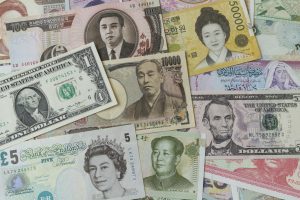The Philippine government faces more expensive borrowing costs due to the high-interest rate environment across global economies following the COVID-19 pandemic. As most of the pandemic borrowings are nearing maturity, the government must refinance its debt to ease its repayment burden. At the same time, it continues to deliver critical social services and investment projects. While debt refinancing provides short-term relief for the fiscal space, the government must consider its costs and underlying risks among its debt management tools.
As with other developing countries, the Philippines accumulated debt during the height of the global health crisis as debt managers took advantage of the low-interest rate environment in financial markets. As the U.S. Federal Reserve, the Bangko Sentral ng Pilipinas (BSP) conducted quantitative easing in 2020, making borrowing costs more favorable for debtors.
The Philippine government sold one-year treasury bills at rates lower than 2% from 2020 until the first half of 2021, while 10-year treasury bonds were priced at 3.46% on average. On top of the regular issuances, it also issued retail treasury bonds with 3- to 5.5-year terms at coupon rates ranging from 2.375% to 5.75%. These retail bonds were issued at an average issuance volume of PHP 421 billion, which is outstandingly higher than the usual PHP 35 billion offer volume for ordinary bond issuances.
Aside from the government’s preference for domestic marketable securities, the country also had access to external multilateral and bilateral loans to finance increased budget expenditures. As a result, the Philippine sovereign debt stock jumped by around 20% during the pandemic in 2020 and continues to grow to its record highs. Outstanding debt recorded at an astounding PHP 15 trillion at the end of 2023.
Cheap borrowing, however, is short-lived as the world economy begins to recover from the impact of the health crisis. Global central banks, most notably the U.S. Federal Reserve, initiated tighter monetary policy in 2022 amid high inflation and geopolitical events. The BSP likewise conducted its monetary tightening through a series of policy rate hikes, effectively raising the overnight reverse repurchase (RRP) rate by 450 basis points to 6.50%.
 In the near term, domestic interest rates are likely to stay “higher for longer,” with BSP Governor Remolona’s statement that the central bank is unlikely to cut its policy rates in the near term as it remains vigilant of the inflation figures and possible supply shocks in 2024. For the Philippine government, this means that the maturing bonds that are falling due in the near term will be refinanced at higher market rates.
In the near term, domestic interest rates are likely to stay “higher for longer,” with BSP Governor Remolona’s statement that the central bank is unlikely to cut its policy rates in the near term as it remains vigilant of the inflation figures and possible supply shocks in 2024. For the Philippine government, this means that the maturing bonds that are falling due in the near term will be refinanced at higher market rates.
A large portion of the maturing sovereign debt within the next five years is the pandemic-related borrowings of the government, which were sold with short payment terms at low interest rates. The average residual maturity of the total debt portfolio is 7.4 years, but this is lengthened mainly because of the external loans. Domestic debt has a shorter average time to maturity of 5.3 years, as about 50% of domestic liabilities are going to mature within the next five years, assuming no additional borrowings by the government. Meanwhile, the external obligations are more spread out through the maturity profile with an average time to maturity of 12 years since foreign multilateral and bilateral loans and foreign-denominated bonds have longer payment terms.
In the next five years, the government will have to face the challenge of paying off its maturing debts, especially the hefty pandemic-related obligations. Debt service payments were already higher in 2023 by around 20%, at PHP 1.6 trillion, compared to the previous year.
Based on the recent Budget of Expenditures and Sources of Financing (BESF), the debt requirements are expected to further increase by 23% to PHP 1.9 trillion in 2024, which accounts for almost 45% of the projected revenue this year. The government’s large debt servicing requirement can potentially crowd out some of the expenditures for its social programs and investment projects if it does not borrow. As a result, debt managers issue new debt to cover a portion of the payments for the old debt through debt refinancing. However, this process introduces higher borrowing costs in the current environment.
The concentration of borrowing in the short to medium term makes the government more susceptible to market risks after market yields have adjusted upwards. The short end of the curve has been the most sensitive to BSP’s monetary tightening policy, with the one-year treasury bills priced at roughly 5.99% on average in 2023, a significant 369 basis point increase from the previous year’s average of 2.30%. Meanwhile, the 10-year bonds have been less sensitive to the rate hikes, only marginally increasing by 5 basis points to around 6.30%.
With the upward adjustment in sovereign bond yields, the government can expect its interest payments to remain elevated for the coming years. Interest payments in 2023 increased by almost 12.8% as maturing debts are refinanced at higher market rates, and they are expected to be higher by nearly 10% this year.
The Philippine sovereign debt situation is not as grave as facing a solvency crisis. Still, the government’s debt refinancing strategy can be expected to result in sustained high levels of debt and, consequently, elevated debt service payments for the next five years. Refinancing offers a convenient option for debt managers to flexibly adjust the profile of their liabilities and repayment schedule. However, policymakers must be reminded that this is simply a temporary solution to budget deficits.
Overreliance on debt refinancing to avoid tightening state expenditures can make the country more vulnerable to economic downturns and increase the risk of a debt-related crisis amid a high-interest rate environment.
Sovereign debt is not an entirely bad, especially if it is used to fund developmental projects that will accumulate wealth for the country. As a developing economy, the Philippines needs to borrow to achieve its growth targets. Nevertheless, policymakers should maintain fiscal discipline and consider fiscal consolidation to reduce the need for debt financing, as well as safeguard the country’s economic growth momentum.
This student blogpost was originally written as an assignment for the course “Sovereign Debt” offered in the academic year 2023, representing the author’s personal views on the subject. The author was inspired and benefited from a discussion with her classmates and Prof. Toshiro Nishizawa.



